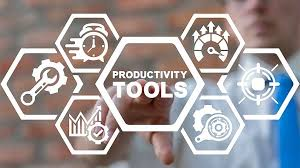Boosting Business Meeting Productivity: Maximizing Efficiency in the Workplace
- Ononkwa Egan
- Aug 7, 2024
- 3 min read
Updated: Aug 9, 2024

In today's fast-paced business environment, time is a precious commodity. Nowhere is this more apparent than in the countless hours spent in meetings. While meetings are essential for collaboration, decision-making, and team alignment, they often fall short of their potential, becoming time-consuming and unproductive. This article delves into the art and science of boosting business meeting productivity, offering insights and strategies to transform your meetings from necessary evils into powerful drivers of organizational success.
The Cost of Unproductive Meetings
Before we explore solutions, it's crucial to understand the magnitude of the problem. Unproductive meetings aren't just frustrating; they're expensive. Consider these statistics:-
The average employee attends 62 meetings per month
- 71% of senior managers say meetings are unproductive and inefficient
- U.S. businesses waste an estimated $37 billion per year on unproductive meetings
These numbers underscore the urgent need for a paradigm shift in how we approach business meetings. By implementing targeted strategies to boost meeting productivity, organizations can reclaim lost time, reduce costs, and enhance overall efficiency.
Strategies for Boosting Meeting Productivity

1. Set Clear Objectives and Agendas: Every productive meeting starts with a clear purpose. Before scheduling a meeting, ask yourself:
- What specific outcomes do we need to achieve?
- Could this be accomplished through other means (e.g., email, chat)?
- Who absolutely needs to be present?
Once you've determined that a meeting is necessary, create a detailed agenda that outlines:
- Meeting objectives
- Topics to be discussed
- Time allocated for each item
- Required preparation for attendees
2. Implement the Two-Pizza Rule: Amazon's Jeff Bezos famously instituted the "two-pizza rule" for meetings: if two pizzas can't feed the entire group, the meeting is too large. This principle ensures that:
- Only essential participants are invited
- Discussions remain focused and efficient
- Decision-making is streamlined
Remember, each additional participant exponentially increases the complexity of communication. Keep your meetings lean and purposeful.
Embrace the Power of Technology
Leverage technology to enhance meeting productivity:
- Use collaborative tools like Google Docs or Miro for real-time document editing and brainstorming
- Implement project management software to track action items and deadlines
- Utilize video conferencing tools with features like screen sharing and breakout rooms for remote or hybrid meetings
4. Master the Art of Facilitation: A skilled facilitator can dramatically improve meeting productivity. Key facilitation techniques include:
- Starting and ending on time
- Keeping discussions on track
- Encouraging participation from all attendees
- Managing dominant personalities
- Summarizing key points and action items
Consider providing facilitation training to team leaders or rotating the role among team members to build this critical skill across your organization.
5. Implement the 3W Framework: Conclude every meeting with the 3W framework:
- What: What decisions were made?
- Who: Who is responsible for each action item?
- When: When are the deadlines for these actions?
This simple yet powerful technique ensures clarity and accountability, preventing the common pitfall of meetings that end without clear next steps.
6. Foster a Culture of Preparation: Productive meetings don't start when participants enter the room; they begin with thorough preparation. Encourage a culture where:
- Attendees review the agenda and supporting materials before the meeting
- Participants come prepared with relevant data, insights, and questions
- Pre-meeting discussions or information sharing occur when appropriate
By front-loading some of the work, you can ensure that meeting time is spent on high-value discussions and decision-making rather than basic information sharing.
Measuring and Improving Meeting Productivity

To truly boost meeting productivity, it's essential to implement a system of continuous improvement. Consider these strategies:
1. Survey Participants: Regularly gather feedback from meeting attendees on the effectiveness of meetings and areas for improvement.
2. Track Key Metrics: Monitor metrics such as meeting frequency, duration, and attendance. Look for trends and opportunities to optimize.
3. Conduct Meeting Audits: Periodically review a sample of meetings across your organization to identify best practices and areas needing attention.
4. Celebrate Successes: Recognize and reward teams or individuals who demonstrate exceptional meeting productivity.
Conclusion
Boosting business meeting productivity is not a one-time effort but a continuous journey of improvement. By implementing the strategies outlined in this article
from setting clear objectives and leveraging technology to mastering facilitation and fostering a culture of preparation
organizations can transform their meetings from time
sinks into powerful catalysts for productivity and innovation.
Remember, the goal isn't to eliminate meetings but to make them as effective and efficient as possible. With commitment and consistent effort, your organization can reclaim countless hours of productivity, reduce costs, and create a more engaging and satisfying work environment for all employees. Start small, measure your progress, and continuously refine your approach. The path to more productive meetings begins with the very next one you schedule or attend. Make it count!





留言